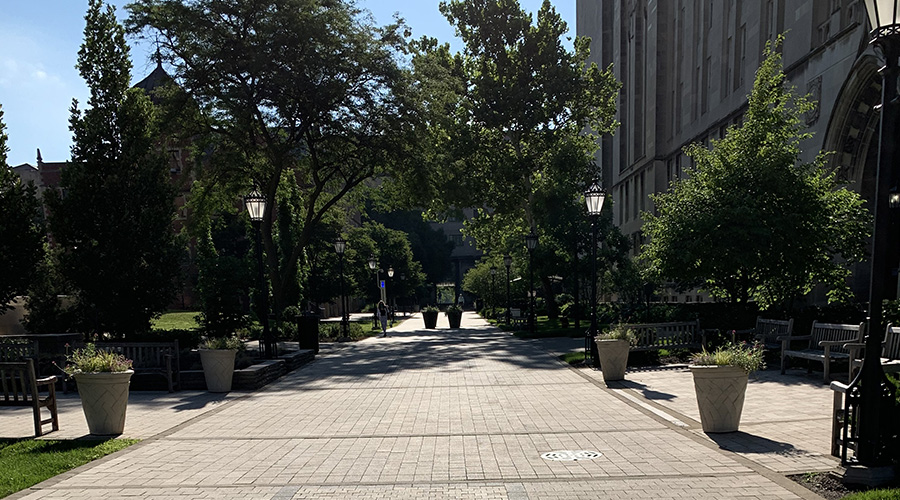« Back to Facilities Management News Home
« Lighting
Harnessing Natural Daylight in Facilities
One-hundred years after Daylight Saving Time was enacted in the United States, strategies of open-plan concepts, adding skylights/windows, and utilizing lighting control and advanced shading technologies have developed to allow homeowners and businesses to make optimal use of natural light all year long. That said, with Daylight Savings Time approaching, now is the perfect time to rethink your daylighting and daylight harvesting strategies for residential and commercial spaces.
Lighting constitutes about 10 percent of the total electricity consumed in both residential and commercial sectors. On average, 17 percent of the energy used in an office space goes toward lighting. As the days begin to get longer, it is important to make the most of natural light to increase energy savings. Exposure to natural light also adds to a healthier work and living environment, helping keep people more alert and productive. Finally, integrating large windows and open spaces have allowed for daylighting and daylight harvesting strategies to become a common trend both in homes and commercial spaces.
But what is the difference between daylighting and daylight harvesting? The answer is simple.
Daylighting is the passive method that allows natural light into a space. For example, the practice of placing large windows and open concept design allows natural light to provide internal lighting while reducing energy use. With daylighting, commercial spaces save on average 20 percent on lighting.
To complement daylighting strategies, automated shading solutions are usually incorporated to help reduce solar heat and control glare and temperature in many spaces. In both homes and commercial spaces, shades help to control natural light to protect occupants from harmful UV and can reduce ambient room temperature up to six degrees Fahrenheit. In addition, shades offer privacy options and provides a decorative touch to any space.
Daylight Harvesting is the active method that allows daylight to offset artificial light while reducing energy. Natural and electric lighting controls, from photosensors that provide automatic switching or dimming control to automated shading systems, allow homeowners and businesses to adjust light levels based on available daylight. Other strategies include light shelves, which is used to help direct daylight further into a space by reflecting light to the ceiling. This helps natural light to fill an entire space instead of what it can naturally reach from an open window.
When using daylight harvesting, commercial spaces can expect a 20 to 60 percent savings from lighting and a 10 to 20 percent savings on cooling with controllable window shades. Lighting controls also help meet daylight harvesting control code requirements. The addition of automated shade controls contributes to LEED and WELL Building Standard certifications.
Both daylighting and daylight harvesting are effective ways to use natural light within a space and save on energy usage. Natural light can help support productivity, create a healthier living and working environment, and promote happier lifestyles. As Daylight Saving Time starts, take advantage of the longer days and use more natural light. Using automated controls that integrate both natural and electric light management is the most effective way to optimize light within a space and save on energy usage.
For more information on Legrand’s solutions that enable Daylight Harvesting, check out: QMotion, Solarfective, and Wattstopper pages.
More From 3/8/2018 on FacilitiesNet







